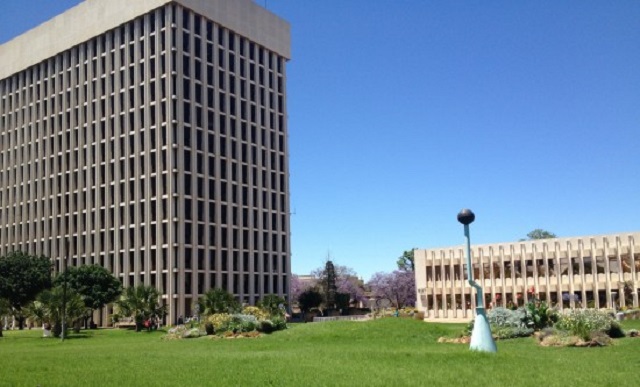EDITORIAL COMMENT: Ward Retention Fund will encourage residents to pay bills

The Bulawayo City Council has introduced an innovative scheme to serve the dual purpose of spearheading development as well as encourage residents and ratepayers to pay their bills.
Dubbed the Ward Retention Fund, the innovation entails setting aside three percent of all cash received from payment of services billed to ward residents.
Residents would then be expected to prioritise programmes to be undertaken in their respective wards, drawing resources from the fund.
Councillors in the city passed the resolution recently to share the money according to residents’ payment of bills in each ward with the area where residents and ratepayers pay more getting a bigger portion and those that pay less getting what they deserve.
“During the 2015 budget outreach, the idea of funding projects that were decided by the ward under the leadership of their elected councillor was mooted. Funding for the projects was to be tied to what each ward contributed to council’s coffers. The receipts into the fund should be three percent of all cash received from payment of services billed to ward residents.
“Ward projects that were to be funded should be decided by the ward and benefit the ward. The purpose of the fund was to encourage residents to pay their bills. Based on their payments, a certain portion of their payments would be set aside to develop their ward. The projects to develop the ward would be chosen by people in the ward,” reads part of the council report.
By December 31, 2016, the fund had accumulated to $1 692 619. Ward One is set to receive the highest figure at $327 502. Not surprisingly the ward encompasses the city centre bounded by Masotsha Ndlovu Avenue, Robert Mugabe way, First Avenue, Samuel Parirenyatwa Street, Railway Avenue, Basch Street and back to Masotsha Ndlovu Avenue.
Ward 15 which encompasses Enqotsheni, Old Luveve, New Luveve and Luveve industries will get the least amount of $14 897.
It sounds like a plausible idea that has potential to motivate residents to pay their bills as they would be knowing that part of their money would be spent in their wards, unlike the previous situation where money collected from residents and ratepayers went into a consolidated fund and then be spread across the city’s 29 wards, even to those that don’t pay anything.
Also, this formula ensures a fairer distribution of resources. We are certain that a resident who does not pay their bills will not really expect to enjoy sound service delivery. By the same token, we are certain that a resident who pays their bills genuinely and justifiably expects sound service delivery. There is nothing fairer than this.
Through this initiative, council would engender a spirit of competition among residents. Each ward, led by its councillor would be out to outdo the other by paying their bills in full and in time so that at the end of the day, they receive some of the money to build roads, clinics, fix sewer and water reticulation systems.
When residents and ratepayers pay their bills, council’s revenue position improves. This is very important because the Bulawayo City Council has been strapped for cash for a long time, a situation that has greatly compromised service delivery. Council is struggling, actually failing, to pay its workers on time, while roads are extensively potholed and water and sewer systems are breaking down more regularly than before with response to the breakdowns taking long periods to come.
The Ward Retention Fund can help in addressing these challenges.
Around 2009, the Government introduced the Constituency Development Fund (CDF) to achieve basically the same targets as Bulawayo’s Ward Retention Fund. The difference was however that CDF payments were flat across the constituencies — $50 000 — and were not based on any revenues collected by people resident in given constituencies.
Its performance was mixed with some constituencies coming up with good projects while others didn’t. We have to point out that one of the weaknesses of the CDF was to put the legislator at the top of prioritisation and use of the money. He or she was the chairperson of the constituency development committee and one of the signatories to the account. The MP was the focal point, not the people. This was a serious weaknesses that resulted in some of them misusing the money.
Bulawayo City Council appears to have learnt from the CDF debacle as its finance director has been given the mandate to prepare or cause to be prepared the monthly, quarterly and annual financial statements for the fund and submit these to the council. In addition, procurement of goods and services shall be done in accordance with the Procurement Act and Regulations.
We are hopeful that the checks and balances put in place will prevent abuse of the fund, especially by councillors, some of whom were recently suspended for corruption while two have been sacked. Another was jailed for fraud.
The involvement of the finance director is encouraging with his responsibility to follow the paper trail, a process that also indirectly helps in project assessment.
Overall, the Ward Retention Fund is a good initiative which other local authorities can adopt.
However this, in no way, must cause council to wait for residents to pay for service delivery to improve. They must pay, yes, but the local authority has always been encouraged to diversify its revenue streams through for example making greater use of its farms. Furthermore, we see no reason why council’s liquor outlets and Ingwebu Breweries are struggling so much when their competition is not doing too badly.









Comments